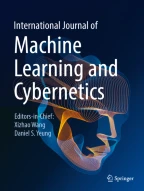Abstract
Quantum-behaved particle swarm optimization (QPSO), like other population-based algorithms, is intrinsically parallel. The master–slave (synchronous and asynchronous) and static subpopulation parallel QPSO models are investigated and applied to solve the inverse heat conduction problem of identifying the unknown boundary shape. The performance of all these parallel models is compared. The synchronous parallel QPSO can obtain better solutions, while the asynchronous parallel QPSO converges fast without idle waiting. The scalability of the static subpopulation parallel QPSO is not as good as the master–slave parallel model.
Similar content being viewed by others
Explore related subjects
Discover the latest articles, news and stories from top researchers in related subjects.References
Kennedy J, Eberhart RC (1995) Particle swarm optimization. In: Proceedings of IEEE international conference on neural networks, Perth, Australia, pp 1942–1948
Eberhart RC, Shi Y (1998) Comparison between genetic algorithm and particle swarm optimization, evolutionary programming VII, lecture notes in computer science 1447. Springer, Heidelberg, pp 611–616
Van den Bergh F (2001) An analysis of particle swarm optimizers, Ph.D. diss. University of Pretoria, South Africa
Sun J, Feng B, Xu WB (2004) Particle swarm optimization with particles having quantum behaviour. In: Proceedings of congress evolutionary computational, Portland, USA, pp 325–331
Clerc M, Kennedy J (2002) The particle swarm: explosion, stability, and convergence in a multi-dimensional complex space. IEEE Trans Evol Comput 6:58–73
Sun J, Xu WB, Liu J (2005) Parameter selection of quantum-behaved particle Swarm optimization. Lect Notes Comput Sci 3612:543–552
Sun J, Xu WB, Feng B (2004) A global search strategy of quantum-behaved particle swarm optimization. In: Proceedings of IEEE conference on cybernetics and intelligent systems, Singapore, pp 111-116
Sun J, Xu WB, Feng B (2005) Adaptive parameter control for quantum-behaved particle swarm optimization on individual level. In: Proceedings of IEEE International conference on systems, man and cybernetics, Hawaii, pp 3049–3054
Nowostawski M, Poli R (1999) Parallel genetic algorithm taxonomy. In: Proceedings of third international conference knowledge-based intelligent information engineering systems, Adelaide, SA, Australia, pp 88–92
Koh B, George AD, Haftka RT, Fregly BJ (2006) Parallel asynchronous particle swarm optimization. Int J Numer Meth Eng 67:578–595
Carlisle A, Dozier G (2001) An off-the-shelf PSO. In: Proceeding of the workshop on particle swarm optimization, Indianapolis, USA
Tian N, Lai CH, Pericleous K, Xu WB Inverse identification of boundary shape using a hybrid approach with boundary element method. Int J Comput Math (submitted)
Tikhonov AN, Arsenin VY (1977) Solution of Ill-posed problems. Winston, Washington DC
Lin C.-M., Li M.-C., Ting A.-B., Lin M.-H. (2011) A robust self-learning PID control system design for nonlinear systems using a particle swarm optimization algorithm. Int J Mach Learn Cybern 2(4):225–234
Rana S, Jasola S, KumarR (2012) A boundary restricted adaptive particle swarm optimization for data clustering. Int J Mach Learn Cybern. doi: 10.1007/s13042-012-0103-y
Wang X, He Y, Dong L, Zhao H (2011) Particle swarm optimization for determining fuzzy measures from data. Inf Sci 181(19):4230–4252
Acknowledgments
This work is partially supported by Bursary of the University of Greenwich, “The Fundamental Research Funds for the Central Universities” (Project Number: JUSRP21012), the innovative research team project of Jiangnan University (Project Number: JNIRT0702), and National Natural Science Foundation of China (Project Number: 60973094).
Author information
Authors and Affiliations
Corresponding author
Rights and permissions
About this article
Cite this article
Tian, N., Lai, CH. Parallel quantum-behaved particle swarm optimization. Int. J. Mach. Learn. & Cyber. 5, 309–318 (2014). https://doi.org/10.1007/s13042-013-0168-2
Received:
Accepted:
Published:
Issue Date:
DOI: https://doi.org/10.1007/s13042-013-0168-2
